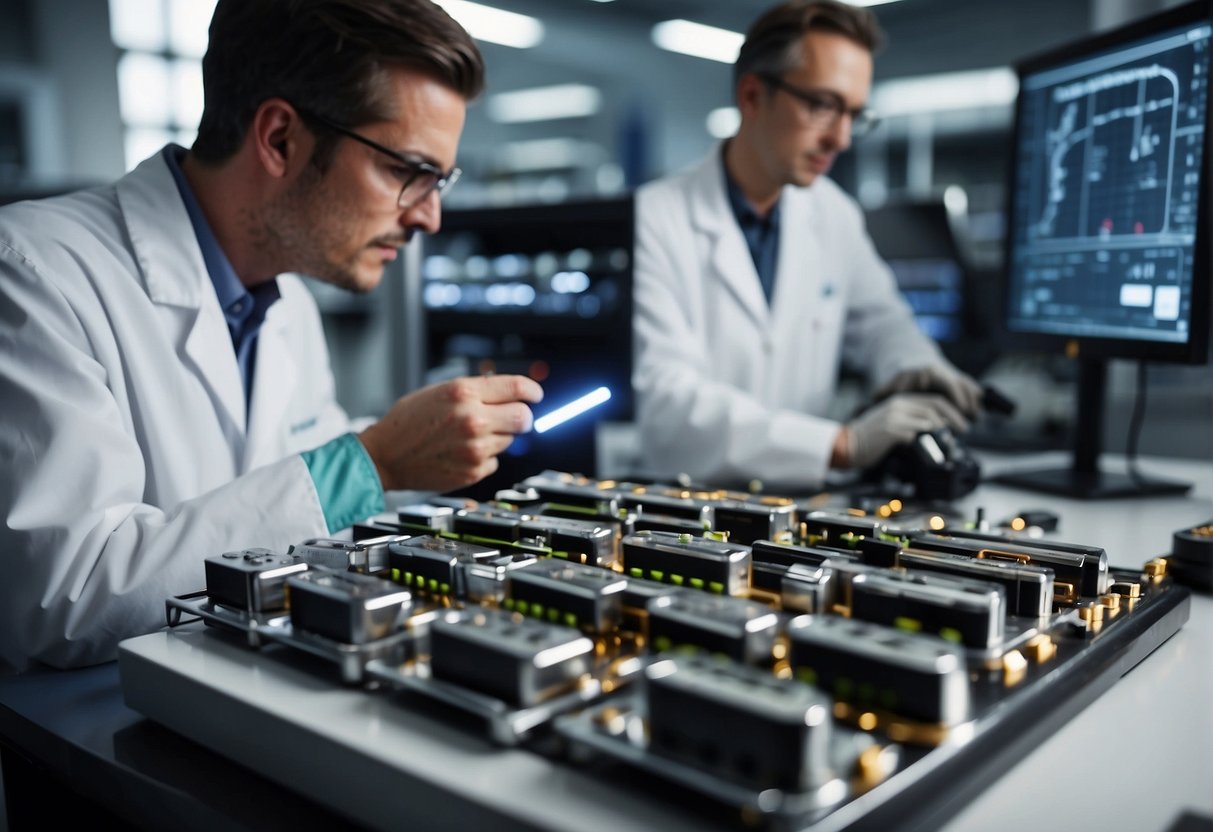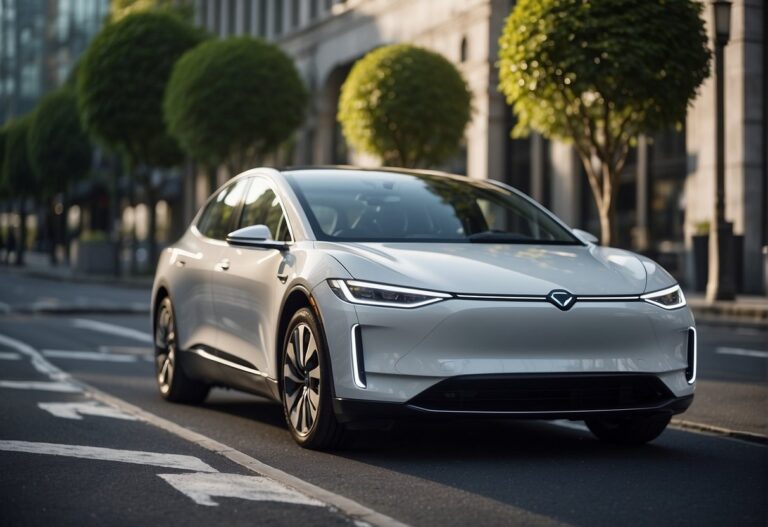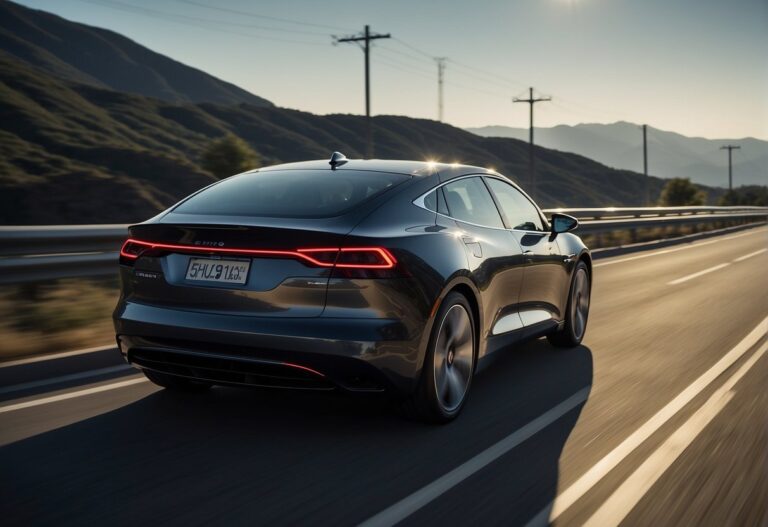Electric vehicles (EVs) have been around for several years, and their popularity is increasing worldwide. As these vehicles become more common, the demand for better EV battery technology is also on the rise. The latest EV battery technology trends are aimed at improving the performance and range of EVs, while also making them more affordable for the average consumer.
One of the most significant trends in EV battery technology is the development of solid-state batteries. These batteries use a solid electrolyte instead of a liquid electrolyte, which makes them safer, more energy-dense, and longer-lasting than traditional lithium-ion batteries. With solid-state batteries, EVs could have a longer range, faster charging times, and a lower risk of fire.
Another trend in EV battery technology is the use of silicon anodes. Silicon anodes can store more lithium ions than traditional graphite anodes, which improves the energy density of the battery. This means that EVs could have a longer range without increasing the size of the battery pack. Additionally, silicon anodes are cheaper to produce than graphite anodes, which could make EVs more affordable for consumers.
Advancements in EV Battery Chemistry
Lithium-Ion Batteries and Alternatives
Lithium-ion batteries are the most commonly used battery technology in electric vehicles (EVs) today. However, the demand for cobalt, nickel, and lithium, which are the primary components of lithium-ion batteries, has increased significantly in recent years, leading to concerns about their sustainability and affordability.
To address these concerns, researchers are exploring alternatives to lithium-ion batteries. One promising alternative is the use of solid-state batteries, which use a solid electrolyte instead of a liquid one, making them safer and more energy-dense. Another alternative is sodium-ion batteries, which are cheaper and more abundant than lithium-ion batteries but still in the early stages of development.
Innovations in Cathode and Anode Materials
The cathode and anode materials used in EV batteries play a crucial role in determining their performance and durability. In recent years, researchers have been working on developing new cathode and anode materials that can improve battery performance and reduce costs.
One promising material for cathodes is lithium iron phosphate (LFP), which is cheaper and more environmentally friendly than other cathode materials like cobalt. Another promising material for anodes is silicon, which has a higher energy density than graphite, the most commonly used anode material.
Emerging Sodium-Ion Battery Technology
Sodium-ion batteries are an emerging technology that could offer a more sustainable and affordable alternative to lithium-ion batteries. Sodium is more abundant than lithium and can be extracted from seawater, making it a more environmentally friendly option.
However, sodium-ion batteries are still in the early stages of development, and their energy density is lower than that of lithium-ion batteries. Researchers are working on developing new materials and designs that can improve the performance and energy density of sodium-ion batteries.
Overall, advancements in EV battery chemistry are critical to the continued growth and sustainability of the EV industry. Researchers are exploring new materials and technologies that can improve battery performance, reduce costs, and increase sustainability, paving the way for a more sustainable and affordable future for EVs.
EV Battery Production and Market Dynamics
Global Manufacturing and Supply Chain
The production of EV batteries is a complex process that involves various stages, from mining and refining battery materials to battery cell manufacturing and assembly. The global manufacturing of EV batteries is concentrated in a few countries, with China, the United States, and Europe being the major players.
China is currently the largest producer of EV batteries, accounting for over 70% of global production. The country has a strong supply chain for battery materials, including lithium, cobalt, and nickel, which are essential components of lithium-ion batteries. The Chinese government has also made significant investments in the EV industry, providing subsidies and incentives to automakers and battery manufacturers.
The United States and Europe are also investing heavily in the production of EV batteries. Tesla, a leading EV manufacturer, has built a Gigafactory in Nevada, which is currently the largest battery manufacturing facility in the world. Other automakers, such as General Motors and Ford, are also investing in battery production to meet the growing demand for EVs.
Cost and Economic Factors Influencing EV Batteries
The cost of EV batteries has been a major barrier to the widespread adoption of EVs. However, the cost of batteries has been declining rapidly in recent years, driven by advances in battery technology and economies of scale. The cost of lithium-ion batteries has fallen by over 80% since 2010, and it is expected to continue to decline in the coming years.
The production cost of batteries is influenced by various factors, including the cost of battery materials, manufacturing processes, and economies of scale. The cost of battery materials, such as lithium, cobalt, and nickel, can be volatile due to factors such as supply and demand, mining regulations, and geopolitical risks.
Regional Market Trends and Investments
The market for EV batteries is growing rapidly, driven by the increasing demand for EVs and the energy transition towards renewable energy. The European Union has set ambitious targets for the adoption of EVs, with a goal of reducing CO2 emissions from new cars by 55% by 2030. This has led to significant investments in the production of EV batteries in Europe, with companies such as Northvolt and Tesla building new battery factories in the region.
In the United States, the market for EVs is also growing rapidly, with Tesla being the leading player in the market. Other automakers, such as General Motors and Ford, are also investing heavily in the production of EVs and EV batteries.
In China, the government has set targets for the adoption of new energy vehicles, including EVs and plug-in hybrid electric vehicles (PHEVs). This has led to significant investments in the production of EV batteries in the country, with companies such as BYD and CATL being major players in the market.
Overall, the market for EV batteries is expected to continue to grow rapidly in the coming years, driven by the increasing demand for EVs and the energy transition towards renewable energy.
Frequently Asked Questions
What are the latest advancements in solid-state battery technology for electric vehicles?
Solid-state batteries are the latest advancements in EV battery technology. They are expected to replace traditional lithium-ion batteries in the future. Solid-state batteries are safer, have higher energy density, and can be charged faster than lithium-ion batteries. Toyota, BMW, and Volkswagen are among the automakers investing heavily in this technology.
Which companies are leading in the production of next-generation EV batteries?
Several companies are leading the production of next-generation EV batteries. Tesla, Panasonic, LG Chem, and Samsung SDI are among the top players. These companies are investing heavily in research and development to improve battery performance, reduce costs, and increase production capacity.
What new chemistries are being developed for electric vehicle batteries to enhance performance?
Lithium-sulfur and lithium-air batteries are among the new chemistries being developed for electric vehicle batteries. These batteries have higher energy density than traditional lithium-ion batteries, which means they can store more energy in the same amount of space. However, these technologies are still in the research and development phase and are not yet commercially available.
How does the latest battery technology improve the range and charging speed of electric vehicles?
The latest battery technology improves the range and charging speed of electric vehicles in several ways. For example, solid-state batteries have higher energy density, which means they can store more energy in the same amount of space. This allows for longer driving ranges. Additionally, faster charging speeds are possible with newer battery chemistries, such as lithium-sulfur and lithium-air.
What breakthroughs have been made in non-lithium battery technologies for EVs?
Non-lithium battery technologies, such as zinc-air and sodium-ion batteries, have shown promise for use in electric vehicles. Zinc-air batteries have high energy density and are relatively low cost, while sodium-ion batteries are abundant and can be produced at a lower cost than lithium-ion batteries. However, these technologies are still in the research and development phase and are not yet commercially available.
What are the projected impacts of recent battery innovations on the cost of electric vehicles?
Recent battery innovations are expected to have a significant impact on the cost of electric vehicles. As battery technology improves, the cost of producing EV batteries is expected to decrease. This will make EVs more affordable for consumers and could lead to increased adoption of EVs in the future. Additionally, the increased production capacity of EV batteries could lead to economies of scale, further reducing costs.



